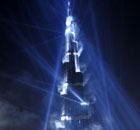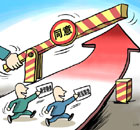Society
Traffic restriction called for as Tibet's vehicle fleet expands
(Xinhua)
Updated: 2010-01-12 20:42
 |
Large Medium Small |
LHASA: Tibet's political advisors who are meeting for the annual advisory session have called for traffic restrictions in the regional capital, Lhasa, as the number of motor vehicles rises.
Tibet Autonomous Region, in southwest China, had almost 200,000 motor vehicles by the end of last year, according to figures released by the regional traffic police authority.
About half of the vehicles were registered in Lhasa. The city has about 95,000 motor vehicles, 70 percent of which are private cars.
| ||||
Kunga Dondrup, who works at the regional center for educational technology, said Lhasa should follow other large cities by restricting traffic through an odd-even license plate system, a point that was echoed by other members at the annual political advisory session that opened Friday.
Doje Dondrup, an advisor in charge of legislative affairs and foreign relations at the regional committee of the political advisory body, cited a growing number of road accidents, overloaded buses and taxies and inadequate parking in downtown Lhasa.
"It's necessary to restrict road traffic flow and give priority to public transport," said Doje Dondrup. "The move will ease congestion and cut emissions."
The advisors also called for overhead bridges and underground tunnels to be built for pedestrians at major crossroads.
For more than a decade, Tseten Wangmo, a devout Buddhist, has made a ritual observance at the Potala Palace every morning. "Nowadays I have to wait for five or six minutes to cross the street."
The street that separates the Potala from the Lhasa river is no more than 10 meters wide. But as one of the busiest streets in Lhasa, it is busy almost 24 hours a day.
No traffic lights had been set at its pivotal crossing leading to the Potala, which is a headache for many elderly people like Tseten Wangmo. When large crowds of pilgrims flock to the Potala on prayer day or major Tibetan holidays, traffic police officers are stationed at the crossing to ensure pedestrian safety.
"The growing motor fleet had revealed Lhasa's inadequate infrastructure and traffic management capability, as well as a lack of safety awareness among the residents," said Kunga Dondrup.
Last year, Lhasa reported 87 deaths on the road, a 13-percent rise year-on-year.









